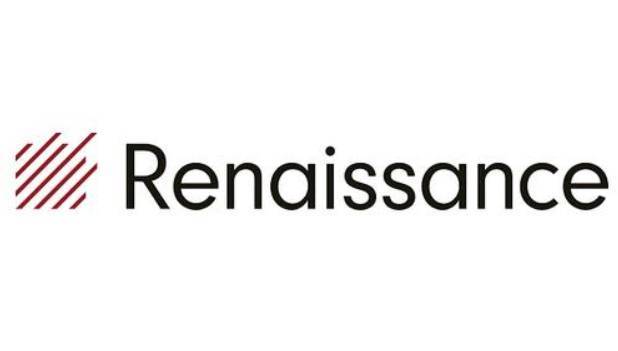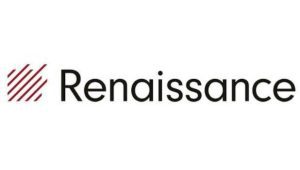Renaissance Technologies, established by James Simons, transformed finance using advanced quantitative models and data-driven trading methods. As of August 2024, RenTech managed approximately $64.5 billion in assets under management (AUM). How can data and mathematics continue to fuel its financial success?
Renaissance Technologies LLC, colloquially known as RenTech or RenTec, is a name that commands respect in the world of finance. Founded in 1978 by James H. Simons, an acclaimed mathematician and former Cold War codebreaker, this American hedge fund has forged an unparalleled reputation through its innovative use of mathematical models and data-driven strategies.
RenTech has redefined the hedge fund industry with the Medallion Fund’s returns and a distinct culture of scientific knowledge.
The firm is headquartered in East Setauket, New York, on Long Island, and is well-known for its systematic trading approach that has transformed the investment landscape. With its flagship Medallion Fund leading the way, Renaissance Technologies has carved out a unique space in the financial services industry, combining the precision of mathematical models with the power of computational analysis.
Renaissance Technologies Fund: Origins and early development
The story of Renaissance Technologies began when James Simons, having spent a decade as Chair of the Department of Mathematics at Stony Brook University, decided to apply his academic insights to the world of finance. Prior to founding RenTech, Simons had already earned significant recognition for his contributions to mathematics, most notably co-developing the Chern-Simons theory, a fundamental component in modern theoretical physics. In 1976, he was awarded the prestigious Oswald Veblen Prize by the American Mathematical Society, underscoring his exceptional prowess in geometry.
Simons initially launched the firm under the name Monemetrics in 1978, operating out of a modest strip mall in Long Island. The early days of Monemetrics focused primarily on currency trading. However, Simons soon realised that his background in mathematics could be leveraged to create predictive models for market analysis. This insight laid the groundwork for what would become one of the most successful hedge funds in the world. In 1982, the firm was rebranded as Renaissance Technologies, marking the beginning of a new chapter focused on data-driven and algorithmic trading.
One of the pivotal moments in Renaissance history was Simons’ decision to bring in individuals with strong academic backgrounds rather than conventional financial experience. Among his first significant hires was Leonard Baum, co-author of the Baum-Welch algorithm, a fundamental tool used in probabilistic analysis and cryptography. While Baum’s early work at Renaissance laid an important foundation, it was algebraist James Ax, another academic recruit from Cornell University, who expanded these models to explore wider market applications. The collaboration between Simons and Ax led to the development of sophisticated trading algorithms that would soon become the backbone of Renaissance’s success.
The Medallion Fund, launched in 1988, became the crowning achievement of this early phase. Named in honour of the mathematics awards won by Simons and Ax, the fund initially faced challenges, including a significant 30% peak-to-trough loss in 1989. While Ax argued that his models had accounted for such a downturn, Simons, holding a majority stake in the company, decided to pause and reassess the strategy. This decision led to Ax’s departure and the entry of Elwyn Berlekamp, a Berkeley professor and consultant for Axcom, who revitalised the fund’s approach.
The success of the Medallion Fund by Renaissance Technologies
Under Berlekamp’s temporary leadership, Medallion was transformed. Working closely with Jim Simons, Henry Laufer, and Sandor Straus, Berlekamp overhauled the trading system, leading to a robust 55.9% net gain in 1990. Following Berlekamp’s return to academia, Straus took over and maintained the fund’s strong performance with impressive annual returns, including 39.4% in 1991, 34% in 1992, and 39.1% in 1993.
Medallion’s consistent profitability soon became legendary. From 1988 to 2018, the fund averaged an annual return of 66% before fees and 39% after fees, a feat unmatched by any other investment vehicle. The fund’s performance was attributed to its proprietary models that analysed vast amounts of data to identify correlations and non-random price movements across various asset classes. Medallion’s success was further amplified by Renaissance’s strict exclusivity, being closed to outside investors since 1993. Only employees and former staff, along with their families, had access to this high-performing investment opportunity.
Data-driven strategies and quantitative models of Renaissance Technologies
The core of Renaissance Technologies’ success lies in its quantitative trading strategy. Unlike traditional investment approaches that rely on human judgement and fundamental analysis, Renaissance utilises complex mathematical models to assess statistical probabilities and predict market behaviour. These models tap into petabyte-scale data warehouses, which store information spanning various financial and non-financial events. This comprehensive dataset enables Renaissance to identify subtle patterns and correlations that other market participants may overlook.
Renaissance’s models incorporate elements of financial signal processing, a field related to pattern recognition and used to detect actionable market signals. The firm’s ability to deploy scalable technological architectures ensures that its trading systems can handle large volumes of data and execute trades with precision. This data-driven methodology has become a hallmark of Renaissance’s operations, allowing it to stay ahead in an increasingly competitive market.
Scientific recruitment: A unique approach of Renaissance Technologies
Renaissance Technologies has distinguished itself from other hedge funds by prioritising the recruitment of experts with non-financial backgrounds. The firm employs mathematicians, physicists, computer scientists, and statisticians who bring fresh perspectives to the world of finance. This approach has led to the firm being described as “a hedge fund run by scientists, for scientists.” Renaissance’s East Setauket campus has been likened to an academic institution, where approximately 150 researchers work on solving complex market problems. Many of these researchers hold PhDs, and the intellectual calibre of the team has been a significant factor in Renaissance’s achievements.
The firm’s emphasis on scientific expertise extends to its culture of collaboration and rigorous analysis. Researchers are encouraged to test hypotheses, develop new models, and refine existing strategies. The firm is known for its low turnover rate, an indicator of job satisfaction and a positive work environment. Renaissance’s intellectual property is highly protected, with employees required to sign stringent non-compete and non-disclosure agreements to safeguard the firm’s proprietary technology and trading secrets.
Renaissance Technologies Fund portfolio
Beyond the Medallion Fund, Renaissance has expanded its portfolio to include other funds available to external investors. The Renaissance Institutional Equities Fund (RIEF), launched in 2005, was designed for long-term institutional investors. Although it has historically lagged behind the Medallion Fund, RIEF has still delivered competitive returns that have strengthened Renaissance’s reputation in the broader investment community. Renaissance also offers the Renaissance Institutional Diversified Alpha (RIDA) and Renaissance Institutional Diversified Global Equities, providing options tailored to varying investment needs.
The performance of these funds has not been without its challenges. High market volatility, such as that seen in 2007 and during the COVID-19 pandemic in 2020, has impacted returns. In 2020, for example, Renaissance reported a decline of approximately 20% in its long-biased RIEF and more significant losses in its market-neutral and global-equities funds. The firm attributed these setbacks to models that “overcompensated” during extreme market conditions, highlighting the inherent risks in systematic trading strategies. Nonetheless, Renaissance’s commitment to refining its models and leveraging historical data has allowed it to adapt and recover over time.
The Medallion Fund as a retirement investment
In an innovative move that underscored the exceptional performance of the Medallion Fund, Renaissance Technologies gained approval from the U.S. Department of Labor to offer this fund as part of its employees’ Roth IRA plans. This unique arrangement allowed employees to invest in the fund without incurring taxes on future earnings, maximising their retirement benefits. The decision to integrate the Medallion Fund into retirement plans demonstrated Renaissance’s confidence in the fund’s long-term stability and growth potential.
The firm’s retirement plan strategy was significant not only for its participants but also for the broader investment community, as it showcased the unique position Renaissance held in the financial world. By 2013, the value of contributions to the firm’s Roth IRA plans had grown significantly, further cementing the reputation of the Medallion Fund as a robust investment option.
Contributions of Renaissance Technologies Fund to political and academic spheres
Renaissance Technologies and its executives have also been active in political and academic circles. James Simons, a philanthropist and supporter of liberal causes, has made substantial contributions to various political campaigns and educational institutions. His generosity has supported scientific research and educational initiatives, reflecting his belief in the transformative power of mathematics and science.
Robert Mercer, another key figure at Renaissance, is known for his support of conservative causes. During the 2016 U.S. presidential election, Mercer was among the largest individual donors, contributing significant funds to political action committees and campaigns. This dual involvement of Simons and Mercer highlighted the diverse political views within the firm’s leadership, demonstrating Renaissance’s broad influence beyond the financial markets.
Renaissance Technologies: Leadership and vision
Today, Renaissance Technologies is led by Peter Fitzhugh Brown, who took over after Robert Mercer’s departure. Brown, like Mercer, is a computer scientist with a background in computational linguistics. He joined Renaissance in 1993 from IBM and has been instrumental in the firm’s technological and strategic evolution. Under Brown’s leadership, Renaissance has continued to prioritise innovation, refining its quantitative models and expanding its use of artificial intelligence and machine learning in trading strategies.
The firm’s discretionary assets under management reached $165 billion as of April 2021, a testament to its continued growth and influence. Renaissance remains a private company, preserving its unique culture and scientific approach to finance. The Medallion Fund continues to operate exclusively for employees and their families, ensuring that Renaissance’s most successful strategies remain closely guarded.
Final thoughts
Renaissance Technologies has cemented its place as a leader in the financial services industry by combining the analytical rigour of science with the dynamism of financial markets. The firm’s success, exemplified by the Medallion Fund’s record-breaking performance, is a testament to the power of data-driven, systematic trading. By fostering a culture of innovation and scientific exploration, Renaissance has set a benchmark for what is achievable in the world of hedge funds.
Under the guidance of its current leadership, Renaissance continues to build on its legacy, evolving its strategies to remain competitive in an ever-changing market. The story of Renaissance Technologies is not just one of financial achievement but also of the transformative impact of mathematics and technology on the modern financial landscape.
Key takeaways
- Founded by mathematician James Simons, Renaissance Technologies pioneered the use of mathematical models in finance, becoming a leader in quantitative trading.
- Known for unparalleled returns, the Medallion Fund averaged 66% annual returns before fees over 30 years, exclusively available to Renaissance employees and their families.
- RenTech hires mathematicians, physicists, and computer scientists, creating a science-driven culture where academic rigor underpins trading strategies.
- Renaissance utilises petabyte-scale data and advanced statistical models, identifying market patterns through data analysis rather than traditional financial judgement.
- Executives like James Simons and Robert Mercer have made significant contributions to political campaigns and educational initiatives, reflecting Renaissance’s broad societal impact.
- Under current leadership, Renaissance remains a private firm, continuing its legacy of innovation in trading strategies and data-driven finance.
Read More:
aqr capital management hedge fund
Himani Verma is a seasoned content writer and SEO expert, with experience in digital media. She has held various senior writing positions at enterprises like CloudTDMS (Synthetic Data Factory), Barrownz Group, and ATZA. Himani has also been Editorial Writer at Hindustan Time, a leading Indian English language news platform. She excels in content creation, proofreading, and editing, ensuring that every piece is polished and impactful. Her expertise in crafting SEO-friendly content for multiple verticals of businesses, including technology, healthcare, finance, sports, innovation, and more.










